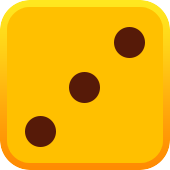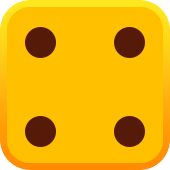












Omaha rewards calculation, nerve, and discipline. With deeper starting ranges and shared community cards, edges come from reading textures, counting combinations, and betting precisely. This concise Omaha poker guide explains rules, key variants, and actionable tactics you can apply today. Whether you prefer live tables or an online Omaha poker game, you’ll learn how to play Omaha poker step by step, compare it with Hold’em, and build a repeatable plan for profit while avoiding classic traps.
Omaha is a community-card poker format where each player receives four private cards and aims to make the best five-card hand using exactly two of them with three board cards. Betting structures vary, but Pot-Limit is the most common, creating disciplined yet exciting decision points. Because players see more card combinations, equities run closer and post-flop skill matters more. For newcomers exploring online poker Omaha, the game offers clarity in rules and a sharp focus on board reading.
Omaha emerged in U.S. cardrooms in the late 1970s and spread through European casinos in the 1980s, eventually standardizing as Omaha and Omaha Hi-Lo. The game uses a 52-card deck, blinds, and a dealer button rotating clockwise each hand. Players act preflop, on the flop, the turn, and the river with standard folding, calling, raising, and checking options. Showdowns follow the Omaha poker game rules of five-card ranking, with flushes beating straights and full houses beating flushes.
|
Item |
Detail |
|
Deck |
52 cards, no jokers |
|
Players |
2–10 at a table |
|
Blinds |
Small blind, big blind |
|
Showdown |
Best 5-card hand using 2 hole + 3 board |
Hold’em uses two private cards, but Omaha deals four, expanding drawing potential and narrowing preflop dominance. Top pair is often marginal in Omaha because opponents frequently hold stronger draws or made hands. Variance rises, yet skilled players exploit texture, blockers, and nut potential to control pots. Expect high action gameplay in multiway spots, but also recognize that disciplined folds protect your bankroll.
|
Aspect |
Texas Hold’em |
Omaha |
|
Hole Cards |
2 |
4 |
|
Must Use |
Any combo |
Exactly 2 hole + 3 board |
|
Dominance |
Wider gaps |
Closer equities |
|
Typical Bets |
No-Limit common |
Pot-Limit common |
Gameplay starts with blinds posted, then four cards are dealt face down to each player. A round of betting occurs before three community cards are dealt (the flop), followed by another betting round. The turn and river arrive one at a time with betting after each street, and surviving players reveal hands at showdown. To master how play Omaha poker, focus on position, stack depth, and the combinations your cards create with likely boards. Before you play, make sure to read the terms on the bonus page so you know the wagering requirements.
Each hand begins with four hole cards—commonly referenced as hole four cards—dramatically increasing the number of starting combinations. Because more draws are possible, raw pair strength declines while coordinated cards gain value. Suitedness and connectivity across all four cards matter more than isolated high ranks. Strong starters typically include double-suited, connected structures that can flop nut draws in multiple directions.
By rule you must use exactly two private cards with three board cards to form your hand; using one or three is invalid. That’s why a board of four hearts doesn’t give you a flush unless you hold two hearts yourself. Misreads fuel the myth of “Omaha poker rule,” but the correct interpretation is strict two-card usage at showdown. Train yourself to declare your two chosen cards aloud when practicing to avoid costly errors.
Action proceeds through four betting rounds: preflop, flop, turn, and river. Positions rotate around the button, with blinds acting first postflop and the button acting last. Pot sizes in Omaha often swell quickly, so plan bets that match board texture and stack-to-pot ratios. Remember, once the river is bet and called, eligible hands are exposed and the highest valid five-card hand wins.
|
Street |
Cards Dealt |
Typical Goals |
Notes |
|
Preflop |
4 hole per player |
Select strong structures |
Value position, avoid weak single-suited trash |
|
Flop |
3 community |
Assess nut potential |
Draws dominate equities |
|
Turn |
+1 community |
Pressure with equity |
Narrow ranges; size for denial |
|
River |
+1 community |
Value or bluff thinly |
Showdown value vs missed draws |
Omaha comes in several betting formats, but casino and platforms overwhelmingly feature Pot-Limit and split-pot variants. Fixed-Limit tables appear in older cardrooms, while No-Limit is rare due to swingy equities. Cash games emphasize deep-stack pattern recognition, whereas tournaments force ICM-aware risk management. Choose a format that fits your risk tolerance, study cadence, and volume Omaha poker online game goals.
PLO caps raises to the current size of the pot, demanding precise arithmetic and timing. Mastering pot-limit rules helps you control volatility while still leveraging fold equity. Because blockers and redraws shape equities, nut-centric ranges outperform speculative one-way hands. Track stack sizes and use position to build pots with hands that can make the nuts multiple Omaha poker rule ways.
|
Situation |
Pot (pre-raise) |
Max Raise You Can Make |
After Call, Pot Becomes |
|
Flop, $10 in pot |
$10 |
$10 call + $20 raise = $30 total |
$40 |
|
Turn, $40 in pot |
$40 |
$40 call + $80 raise = $120 total |
$160 |
|
River, $160 in pot |
$160 |
$160 call + $320 raise = $480 total |
$640 |
This split-pot variant awards half the pot to the best high hand and half to the qualifying low (8-or-better). Low hands must use five cards ranked eight or lower with no pairs, counting straights and flushes against neither high nor low in qualification. Scooping both halves requires nut awareness on both axes, commonly through A-2-x-x structures with suits. When players mention Omaha hi-lo, they’re referring to this exact “high-low split 8-or-better” structure.
Winning in Omaha derives from nut potential, positional aggression, and disciplined folding. Think in hand classes—double-suited connectors, wheel-heavy lows, Broadway clusters—and map them to board textures. Bet sizes should deny equity to dominated draws while extracting from second-best made hands. Maintain emotional control; equities run close, but long-term edges come from consistent decisions informed by range math and table Omaha poker rule dynamics. Explore the best slot online games available at Lucky Tiger Casino and enjoy high-quality gameplay.
Start with hands that can make the nuts in multiple directions: nut flushes, top straights with redraws, and full houses. Double-suited, connected hands like A♠K♠Q♥J♥ outperform one-gapped, off-suit mixes that rarely realize equity. Blockers (for example, holding the ace of a suit) raise bluffing value on scary rivers. Use these principles as your north star for strategy Omaha poker and apply poker Omaha strategy with position and stack awareness.
Bare aces with little connectivity often underperform without redraws or suits. Middle sets look pretty but can be crushed by wraps and higher set possibilities, especially multiway. Weak flushes bleed chips when the nut flush is live and likely. Stay selective, escalate pressure only when your range contains the nut advantage, and remember that rules Omaha strategy poker reward combination power over single-card heroes.




